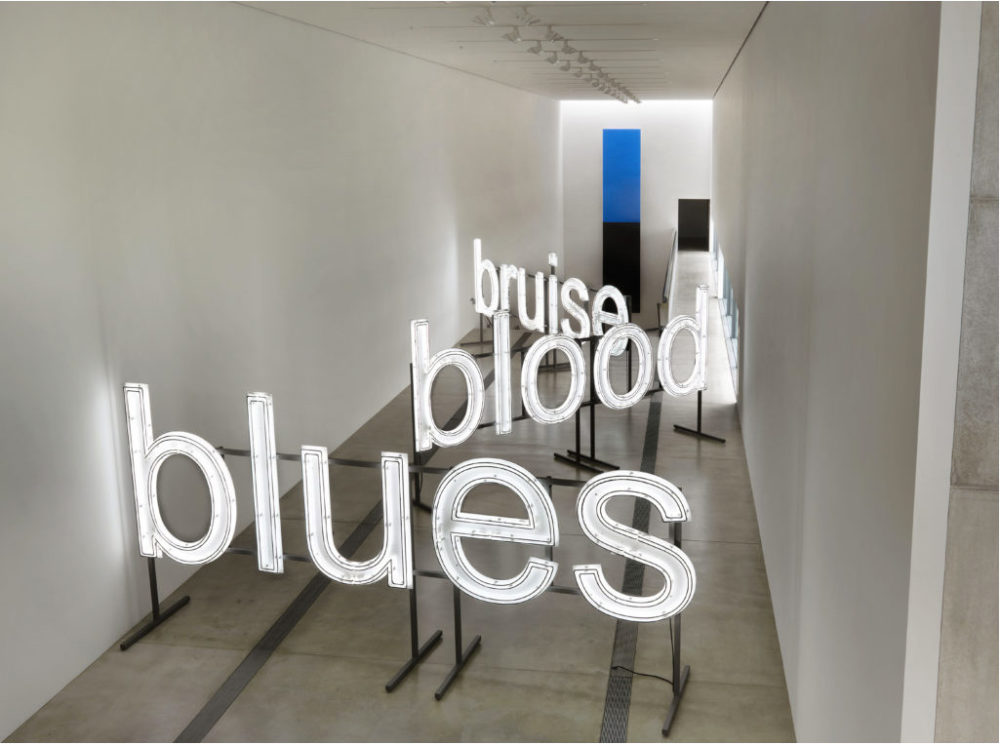
- Source: ARTNET NEWS
- Author: TERENCE TROUILLOT
- Date: AUGUST 24, 2017
- Format: DIGITAL
Glenn Ligon’s Group Show ‘Blue Black’ Explores the Dramatic Tension of Race and Color in America
The artist took inspiration from the eponymous Ellsworth Kelly painting.

The American conceptual artist Glenn Ligon, widely known for his neon sculptures and text paintings, has curated an impressive group exhibition at the Pulitzer Art Foundation in St. Louis. “Blue Black,” the show’s title, is inspired by the eponymous Ellsworth Kelly painting that is permanently installed at the Pulitzer. The 28-foot-tall Kelly work, made 15 years before the artist’s death, is comprised of two large monochrome aluminum panels painted blue and black. The hues of the paintings have become the theme for which Ligon deftly explores notions of race, language, color, and identity in manifold selections of paintings, sculptures, and mixed media works. The show includes over 50 artworks—from established artists like Suzanne McClelland, Andy Warhol, Norman Lewis, and Kara Walker to up-and-coming artists such as Eric N. Mack and Turiya Magadlela—appearing alongside Ligon’s work.
While the exhibition sees the artist delving into a form of creative expression not all too common in Ligon’s practice, “Blue Black” is not the artist’s first foray into curating: The artist curated a project in 2015, titled “Encounter and Collisions,” first exhibited at Nottingham Contemporary and later at the Tate Liverpool. The exhibition, drawing inspiration from the Ligon’s collected writings on artists he admired, brought together artists whose work have rarely been seen together in one place, such as Beauford Delaney and Franz Kline. Similarly, “Blue Black” brings works that have never been seen together before. Here, however, the convergence draws on the dramatic tension between two specific colors—both formally and symbolically.
One of the more noteworthy examples of this is Kerry James Marshall‘s Untitled (policeman) (2015), a painting of black Chicago police officer sitting on the hood of his car. The work not only complicates the friction between what both colors represent in this country (i.e., a black man and police officer)—and the implied violence that comes from such juxtaposition—the compositional framing and the use of cool blues and rich blacks darken the painting in a way that shortens the depth field of the picture plane.
The result is a deep sense of anxiety caused by both the subject matter and the tension between the flatness and depth of space created from both colors in the work. Other examples are much more abstract, duly exploring how the interaction of both colors imply or negate space. These works include Norman Lewis’s Blue and Boogie (1974), and Ross Bleckner‘s Gallaxy Painting (1993).
Despite the solemness that these colors imply, “Blue Black” offers a profound range of complexities that the two pigments, together, can provide—from the highly political to the deeply beautiful.

